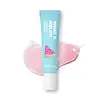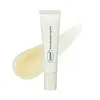What's inside
What's inside
 Key Ingredients
Key Ingredients

 Benefits
Benefits

 Concerns
Concerns

 Ingredients Side-by-side
Ingredients Side-by-side

Polyisobutene
Hydrogenated Polyisobutene
EmollientBeeswax
Emulsion StabilisingMicrocrystalline Wax
Emulsion StabilisingMethyl Hydrogenated Rosinate
PerfumingPanthenol
Skin ConditioningCeramide NP
Skin ConditioningCitrullus Lanatus Fruit Extract
Skin ConditioningMel Extract
MoisturisingPropolis Extract
Skin ConditioningHoney Extract
HumectantSimmondsia Chinensis Seed Oil
EmollientArgania Spinosa Kernel Oil
EmollientAdansonia Digitata Seed Oil
EmollientHelianthus Annuus Seed Oil
EmollientMoringa Oleifera Seed Oil
EmollientVanilla Planifolia Fruit Extract
Skin ConditioningMacadamia Ternifolia Seed Oil
EmollientTriticum Vulgare Germ Oil
EmollientMangifera Indica Seed Butter
Skin ConditioningTocopherol
AntioxidantElaeis Guineensis Kernel Oil
EmollientParfum
MaskingCI 75470
Cosmetic ColorantPolyisobutene, Hydrogenated Polyisobutene, Beeswax, Microcrystalline Wax, Methyl Hydrogenated Rosinate, Panthenol, Ceramide NP, Citrullus Lanatus Fruit Extract, Mel Extract, Propolis Extract, Honey Extract, Simmondsia Chinensis Seed Oil, Argania Spinosa Kernel Oil, Adansonia Digitata Seed Oil, Helianthus Annuus Seed Oil, Moringa Oleifera Seed Oil, Vanilla Planifolia Fruit Extract, Macadamia Ternifolia Seed Oil, Triticum Vulgare Germ Oil, Mangifera Indica Seed Butter, Tocopherol, Elaeis Guineensis Kernel Oil, Parfum, CI 75470
Bis-Diglyceryl Polyacyladipate-2
EmollientGlycerin
HumectantHydrogenated Vegetable Oil
EmollientSorbitan Olivate
EmulsifyingCaprylic/Capric Triglyceride
MaskingPolyglyceryl-2 Triisostearate
EmulsifyingButylene Glycol
HumectantPropanediol
SolventCamellia Japonica Seed Oil
EmollientIsononyl Isononanoate
EmollientSorbitan Isostearate
EmulsifyingPersea Gratissima Oil
Skin ConditioningHydrogenated Polyisobutene
EmollientStearalkonium Hectorite
Gel FormingMelaleuca Alternifolia Leaf Oil
AntioxidantSodium Hyaluronate
HumectantButyrospermum Parkii Butter
Skin ConditioningSantalum Album Oil
MaskingSimmondsia Chinensis Seed Oil
EmollientLavandula Angustifolia Flower/Leaf/Stem Extract
MaskingHibiscus Sabdariffa Flower Extract
Skin ConditioningOpuntia Ficus-Indica Stem Extract
Skin ConditioningMoringa Oleifera Seed Oil
EmollientLeontopodium Alpinum Callus Culture Extract
AntioxidantHydrogenated Polycyclopentadiene
Octyldodecanol
EmollientTocopherol
AntioxidantPanthenol
Skin ConditioningPropylene Carbonate
SolventDisteardimonium Hectorite
StabilisingWater
Skin ConditioningCeramide NP
Skin ConditioningDisodium Phosphate
Buffering1,2-Hexanediol
Skin ConditioningEthylhexylglycerin
Skin ConditioningDehydroacetic Acid
PreservativeBis-Diglyceryl Polyacyladipate-2, Glycerin, Hydrogenated Vegetable Oil, Sorbitan Olivate, Caprylic/Capric Triglyceride, Polyglyceryl-2 Triisostearate, Butylene Glycol, Propanediol, Camellia Japonica Seed Oil, Isononyl Isononanoate, Sorbitan Isostearate, Persea Gratissima Oil, Hydrogenated Polyisobutene, Stearalkonium Hectorite, Melaleuca Alternifolia Leaf Oil, Sodium Hyaluronate, Butyrospermum Parkii Butter, Santalum Album Oil, Simmondsia Chinensis Seed Oil, Lavandula Angustifolia Flower/Leaf/Stem Extract, Hibiscus Sabdariffa Flower Extract, Opuntia Ficus-Indica Stem Extract, Moringa Oleifera Seed Oil, Leontopodium Alpinum Callus Culture Extract, Hydrogenated Polycyclopentadiene, Octyldodecanol, Tocopherol, Panthenol, Propylene Carbonate, Disteardimonium Hectorite, Water, Ceramide NP, Disodium Phosphate, 1,2-Hexanediol, Ethylhexylglycerin, Dehydroacetic Acid
Ingredients Explained
These ingredients are found in both products.
Ingredients higher up in an ingredient list are typically present in a larger amount.
Ceramide NP is a type of ceramide.
Ceramides are intercellular lipids naturally found in our skin that bonds dead skin cells together to create a barrier. They are known for their ability to hold water and thus are a great ingredient for dry skin.
Ceramides are an important building block for our skin barrier. A stronger barrier helps the skin look more firm and hydrated. By bolstering the skin ceramides act as a barrier against irritating ingredients. This can help with inflammation as well.
If you would like to eat ceramides, sweet potatoes contain a small amount.
Read more about other common types of ceramides here:
Ceramide AP
Ceramide EOP
Hydrogenated Polyisobutene is a synthetic polymer. Polymers are compounds with high molecular weight. Hydrogenated Polyisobutene is an emollient and texture enhancer.
In one study, Hydrogenated Polyisobutene showed better skin hydration levels than Caprylic/Capric Triglyceride. As an emollient, it helps keep your skin soft and hydrated by trapping moisture in.
Hydrogenated Polyisobutene is often used as a mineral oil replacement.
Learn more about Hydrogenated PolyisobuteneMoringa Oleifera Seed Oil is the oil expressed from the seeds of Moringa oleifera plant. It is more commonly known as Moringa seed oil.
Moringa seeds have antioxidant, anti-inflammatory, and skin hydrating properties. These seeds are rich in oils, proteins, monounsaturated fats, and tocopherols.
As an emollient, moringa seed oil helps trap moisture in the skin by creating a film on top. This helps keep your skin hydrated and soft.
Many compounds in moringa seed oil are antioxidant and anti-inflammatory. These compounds include Vitamin E. , catechins, ferulic acid, and more.
Another compound found in Moringa seed oil is oleic acid.
Moringa trees are native to the Himalayan mountains.
This ingredient may not be fungal-acne safe.
Learn more about Moringa Oleifera Seed OilPanthenol is a common ingredient that helps hydrate and soothe the skin. It is found naturally in our skin and hair.
There are two forms of panthenol: D and L.
D-panthenol is also known as dexpanthenol. Most cosmetics use dexpanthenol or a mixture of D and L-panthenol.
Panthenol is famous due to its ability to go deeper into the skin's layers. Using this ingredient has numerous pros (and no cons):
Like hyaluronic acid, panthenol is a humectant. Humectants are able to bind and hold large amounts of water to keep skin hydrated.
This ingredient works well for wound healing. It works by increasing tissue in the wound and helps close open wounds.
Once oxidized, panthenol converts to pantothenic acid. Panthothenic acid is found in all living cells.
This ingredient is also referred to as pro-vitamin B5.
Learn more about PanthenolThis oil comes from the seeds of the desert shrub called Jojoba. It is more commonly known as jojoba oil, a non-comedogenic oil.
Jojoba oil does not contain fragrance and has many fatty-acids, making it a great soothing ingredient.
It also contains Vitamin E, a great moisturizing ingredient. Vitamin E is also an antioxidant and protects your skin against oxidative damage.
This ingredient humectant properties, meaning it helps draw moisture from the air. This helps keep your skin hydrated.
While jojoba has antibacterial properties, it is only able to kill some strains of bacteria.
Studies also show it helps in wound healing. In fact, Indigenous cultures have used jojoba as a moisturizer and to help treat burns for centuries.
Fun fact: Jojoba oil similar to natural human skin sebum, so it has a great effect on dry skin. It is also promising with helping to regulate sebum production.
Due to its fatty acid content, Jojoba oil may not be fungal acne safe. We recommend speaking with a professional if you have any concerns.
Learn more about Simmondsia Chinensis Seed OilTocopherol (also known as Vitamin E) is a common antioxidant used to help protect the skin from free-radicals and strengthen the skin barrier. It's also fat soluble - this means our skin is great at absorbing it.
Vitamin E also helps keep your natural skin lipids healthy. Your lipid skin barrier naturally consists of lipids, ceramides, and fatty acids. Vitamin E offers extra protection for your skin’s lipid barrier, keeping your skin healthy and nourished.
Another benefit is a bit of UV protection. Vitamin E helps reduce the damage caused by UVB rays. (It should not replace your sunscreen). Combining it with Vitamin C can decrease sunburned cells and hyperpigmentation after UV exposure.
You might have noticed Vitamin E + C often paired together. This is because it is great at stabilizing Vitamin C. Using the two together helps increase the effectiveness of both ingredients.
There are often claims that Vitamin E can reduce/prevent scarring, but these claims haven't been confirmed by scientific research.
Learn more about Tocopherol